Keel of a ship and types of keel
Contents
Keel of a ship and types of keel
Keel is the bottom most plate of a ship and usually very thick in size as whole ship structure sits on this plate, also refers as center-line, the construction of ship starts from here.
Keel is also called as back bone of a ship as it is the main part of the ship
It is also protected by keel-guard.
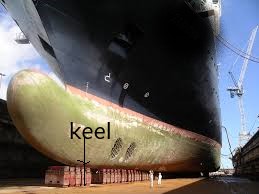
Types of keel
Bar keel
Flat keel
Duct keel
Bar Keel
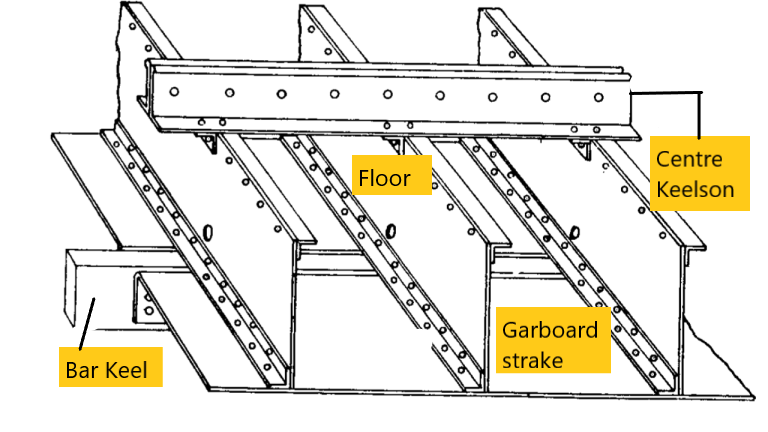
First type of keel which is used since the first iron type of ship is built
It is mostly used for Ferries, tugs, and boats where they are more exposed to grounding risk.
A bar made up of steel is placed in the centre of the keel called bar keel.
Bar keel is stronger and heavier than the flat keel.
Steel plates on either side of the bar keel are known as gar-board strake.
Flat Keel
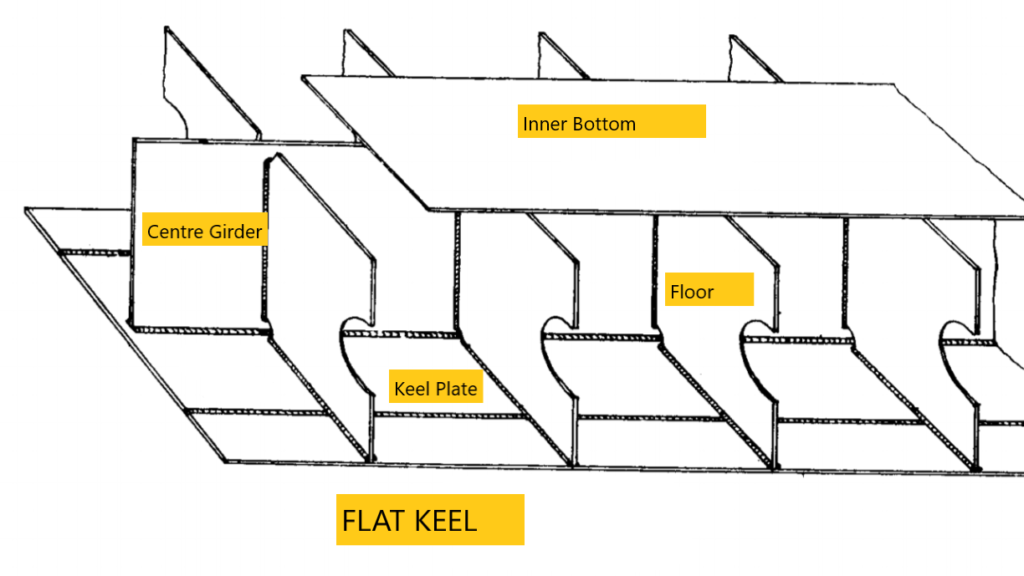
Flat keel is used in single bottom ships.
This type of keel is prefer in modern time and is used by all sea going vessels
It is a solid plate attached to supporting plates it must be thicker than the adjoining plates
The centre girder is attached to the keel and inner bottom plating by continuous welds and there is no scallops in this connection.
Flat plate keel can be used with the single bottom hull or double bottom hull.
In single bottom hull – Flat keel plate forms an ‘I’ section with a vertical longitudinal centreline plate on top of it and a horizontal plate above the longitudinal beam.
The vertical plate is known as Keelson plate, and the vertical plate above is known as the Rider plate.
In double bottom hull- Flat plate keel forms a strong ‘I’ section with the vertical plate commonly called the centre girder and the horizontal plate being part of the tank top.
Duct Keel
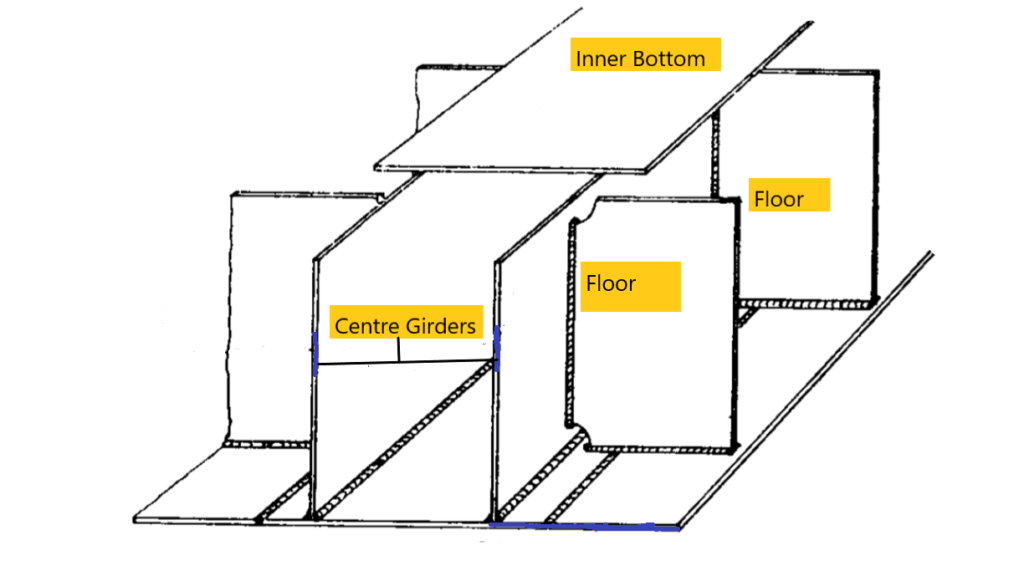
Duct keel is used in double bottom hull ships and consists of solid plates joint together into a box shape and it allows pipes and other required services to pass throughout the length of the keel(watertight) from forward to aft .
It runs from collision bulkhead to forward engine room bulkhead
It consist of two center girder
Why Duct keel has advantage over other types of keel
The Duct keel has high strength in comparison to other types of keel ,in addition, it also provides safety to the cables, oil pipelines and ballast lines which are situated at the bottom ,it serves as a chamber which runs fore and aft.
At the time of inspection a crew can easily walk through this type of keel,sounding pipes are attached to these duct keel so that regular check is maintained for any kind of water or oil leakage.
Any leakage found must be reported immediately and action to avoid any threat to the safety of the ship must be carried out immediately
Entry in the Duct Keel
The inlet and the outlet ventilation flaps of the duct keel must be opened prior entry, in addition the duct keel fan must be switched on and keep running for 15-20 minutes ,extra precaution can be taken by using extra blowers for ventilation.
Gas detector check must be carried out and check list must be filled prior to any type of Enclosed entry,the duty officer to be informed with at-least one standby person and both must carry communication device with them.
After satisfying entry can be made with adequate illumination.
Under Keel Clearance
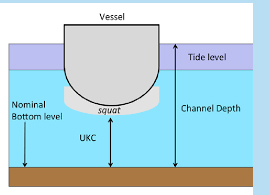
Under keel clearance: It is the vertical distance between the deepest point of the ship in the water and the seabed.
Under keel clearance is calculated so that grounding of the vessel is avoided and no damage is caused to the ship due to impact occurred by grounding.
Under-keel clearance is calculated as follows:
UKC = (Charted Depth of Water + Height of Tide) –(Draft)
Charted Dept of water – it is the distance from chart datum to the seabed.
Chart datum- it is just a point from which all the depts on the chart are measured. Charted dept is not the actual depth of water. Actual depth of water will be from the waterline to the seabed, not from chart datum to the seabed. Therefore, seafarers need to add the height of the tide.
Some of the terms used in Keel Construction
Shell plating
The outer plates and bottom plates of the ships hull.
Shell plating acts as watertight skin of the ship , it also adds to the longitudinal strength of the ship.
Shell plating are of two types
Bottom shell plating
Bottom shell plating is the plates on the bottom part of the ship,this plate is laid in the horizontal direction. keel of the ship is also consider as the bottom shell plate.
Side shell plating
Side shell plating is the plates used on the sides of the ship that forms the watertight skin along the ship side. This plate is the laid in the vertical direction.
Deck plating
Deck plating is hard steel plate. It is steel plate that forms the main deck of the ship.
Example accommodation deck plating or main deck plating.
Strake
The Shell plate or the hull of the ship is made up of small section of plate welded together to make up one unified structure, these smaller sections of plate is called as Strake
There are three type of strakes
Shear Strake
Shear strake is the top most strake(Plate) on the Side shell plating.
Shear strake is usually of higher thickness and strength than other strakes due to its more exposure to wear and tear.
Keel Strake
Keel plate is also made up of small sections of the steel plates joint together to form one structure.
These all strake of plates joint together forms keel of the ship and is know as Keel Strake.
Garboard Strake
Garboard strake is the first strake laid on each side of the keel strake, next to the keel.
Stiffners
Stiffners are used to provide strength to a ship structure .
A stiffner laid in longitudinal direction is called Longitudinal stiffner.
Stiffners laid in transverse direction is called as transverse stiffner.
Girder
Girders are basically a type of longitudinal stiffners. These are
- Big size steel plate/beams connected to the keel of the ship
- Laid in fore and aft direction
- It provides extra strength to the ship against outer pressure
Girders are classified according to its location.
Center girder– The girder laid at center of the ship and divides the ballast tanks into port and starboard.
Side girder-The girder laid at sides.
Longitudinals
Longitudinal are the stiffners placed longitudinal.
Longitudinals are beams (mostly L-beams) and laid along the length of the ship.
Bottom Longitudinals-Longitudinals which provides strength to the bottom of double bottom tank
Top Longitudinals– Longitudinals which provides strength to the top of double bottom tank
Frames
Frames act as major transverse stiffners.
Frames are of big size plate connected with the bottom of the ship ,it runs in arthwartship direction,the purpose of it is to provide extra strength against pressure
Transverse
Transverse is also called as transverse stiffners. These are of lesser height
Stringers
Stringer is mostly used is the forward part of the ship,and is welded in horizontal direction.
Bilge Keel
Bilge keels are fixed on each side of the ship.
Purpose of the Bilge Keel
1.It is used to reduce a ship’s tendency to roll.
2.It increase hydrodynamic resistance to rolling, making the ship roll time less.
3.It provide passive stability systems.
The bilge keel is the form of a strake, or small keel , attached along the length of the hull.
Different types of keel
Full Keel –This type of keel is a V Shaped and extends vertical downward ,it is usually hollow and ballasted or weighted for the purpose of maintaining stability and resistance.
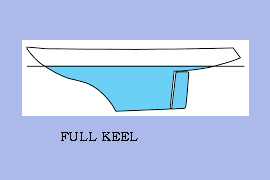
Fin Keel –This type of keel is a narrow plate made up of metal or wood fixed on midships to the keel, it is also for stability and resistance purpose.
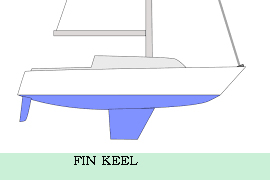
The bulb keel – This type of keel is mostly used in racing boats and ballast is used to keep the boat lower.
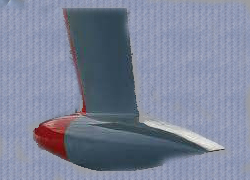
The wing keel –This type of keel is used in racing boats and high performance vessel or crafts ,keel is just like tail of an airplane ,it helps in improving efficiency and keeps the draft minimum.
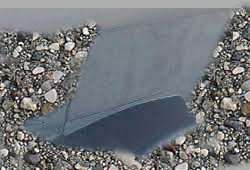
Keel of a ship and types of keel
You may be interested in reading Types of marine fenders
Feedspot
Feedspot is a collection of blogs and websites in one place.
One can Really save time by not visiting each website separately to see what’s new.
To read interesting Marine Blogs from 40 different website click below link
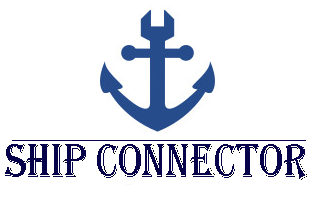
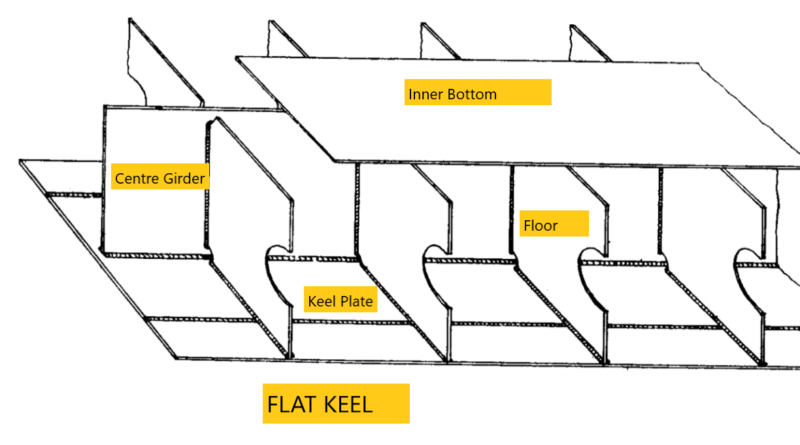

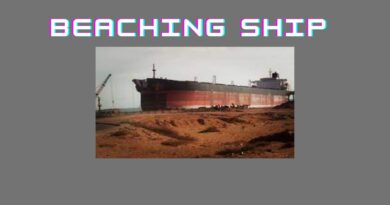
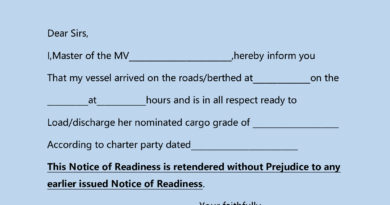
Best information I ever found